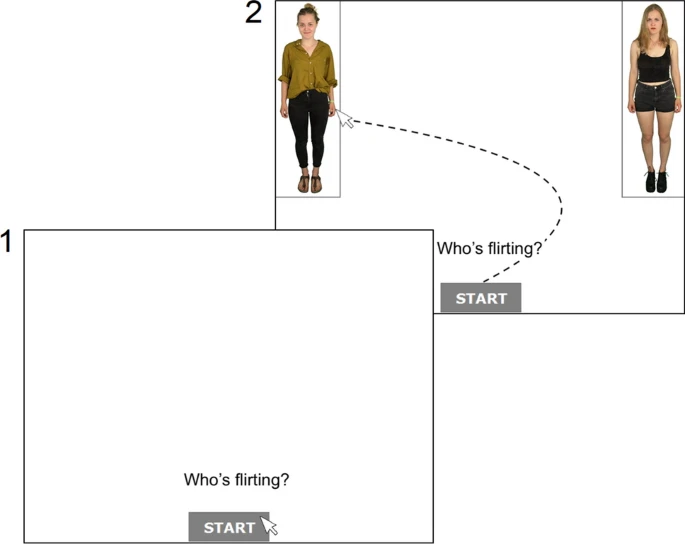
You’ve probably heard the phrase “Men are from Mars, women are from Venus” before. The phrase was coined by author John Gray, who used it as the title of a very popular book. Here he seeks to explain how men and women live in different “worlds” and expect different things from a relationship. However, modern research shows the core premise of this book is wrong.
Contrary to what many have been led to believe by convenience store titles like this, there is no such thing as a “male” or “female” brain. There is no evidence that men have brains that predispose them toward aggression and logic or that women are somehow neurologically wired toward nurturing, creativity, and emotional outbursts. Men’s and women’s brains aren’t that different at all, research shows.
However, I think this phrase is a pretty good metaphor for describing how men and women approach sexual intent and finding a partner.
The Differences Lie in Reproductive Strategies
While both genders have an inherent biological urge to reproduce, their reproductive strategies couldn’t be more different. A man’s reproductive fitness, meaning the amount of offspring he produces, depends on how many women he is able to get pregnant. For men, sex is typically a low-risk, high-reward situation, from an evolutionary standpoint.
That’s not how it works for women, though. A woman risks pregnancy, birth, nursing, and raising the child, as well as lost opportunities to reproduce with other potentially more suitable men. As such, it’s common for women to be showered with sexual attention from men. But her best interests demand a lot of rejection.
These contrasting interests may also explain one long-standing observation. Heterosexual men misinterpret sexual interest from women much more frequently than the other way around.
To be fair to everyone, assessing sexual intentions can be challenging for both men and women. Of course, it’s made more difficult because most people are extremely reluctant to reveal their intentions overtly. Instead, people often engage in behaviors that only hint at their sexual intentions. We ensure actions could be interpreted as friendly to provide plausible deniability in the event of rejection — a sort of social shield that protects against embarrassment. However, the problem with this mixed-signaling is that it can lead to misperceptions and misunderstandings.
One intriguing 2014 study found that women reported that men often misinterpret their signals of friendliness as sexual interest. Conversely, the men in the study reported that women often misinterpret their signals of sexual interest as friendliness. It’s frustrating for all involved, no doubt. But what about those situations where women don’t show indicators of friendliness, but they’re still misinterpreted by some men as being sexually interested?
A new study conducted in Germany sheds light on the dynamics of such scenarios. The study reveals that cue incongruity — where a woman’s verbal or nonverbal signals do not match her appearance — and the man’s state of sexual arousal significantly influence these misunderstandings to a significant degree. Furthermore, men who frequently misinterpreted these cues were more inclined to show misogynistic tendencies.
Challenges in Interpreting Incongruent Sexual Signals

There are good reasons for men to accurately discern a woman’s sexual interest before an approach. Accurate judgment can help them avoid negative outcomes ranging from emotionally taxing rejection to more serious issues like accusations of inappropriate behavior or sexual harassment. The researchers aimed to delve into why some men misinterpret these signals despite it being advantageous to avoid them. In particular, they focused on non-verbal cues such as female body language and attire.
To explore these dynamics, the study recruited 79 young heterosexual male participants from a German college town. For their experiment, the researchers utilized mouse-tracking software, which records the trajectory of mouse movements as participants make choices on a computer screen. The software tracks the speed, direction, and hesitation of movements. The idea was to gauge the participants’ first instincts, which is why their task had to be performed quickly.
Participants were presented with pairs of images depicting women in various attire and with different facial expressions. These pairs were designed to contrast specific cues (such as flirtatious or rejecting expressions) against general cues (such as casual or revealing clothing). A total of 192 images were utilized in the study. Participants were tasked with swiftly selecting an image based on which woman they believed was more likely flirting with them at that moment. This task was conducted both before and after participants listened to an erotic audio story, which was intended to induce sexual arousal.

Additionally, participants were asked to complete a series of questionnaires that assessed various dimensions related to sexuality. Parameters included acceptance of rape myths, sexual desire, and tendencies towards sexual objectification.
Results showed that the participants faced difficulties interpreting sexual interest from women who displayed incongruent cues. For instance, when a woman’s attire was more sexually suggestive but her facial expression was rejecting, they had more difficulty. This scenario led to a higher rate of misinterpretation, with men more likely to mistakenly perceive sexual interest. The number of errors increased after the participants were sexually aroused.
The Impact of Sexual Objectification and Desire on Misinterpretation
Further analysis indicated that men with a higher sexual drive and a stronger inclination towards sexually objectifying women were especially susceptible to these misinterpretations. This subgroup of men was more prone to disregard the woman’s rejecting facial expressions. Instead, they based their judgments on the more general cues of attire, which resonated with their own state of arousal.
Although the researchers tracked a lot of things about cursor movements, they found that these factors had little consequence compared to the actual decisions the participants made.
“It was ultimately the errors that had the strongest significance, especially as they correlated significantly with participants’ self-reported problematic (e.g., exploitative, disinhibited) sexuality, which is methodologically encouraging but at the same time came quite unexpectedly,” study author Ingo Landwehr, a PhD student at the Institute of Psychology at Johannes Gutenberg University Mainz, told PsyPost.
The authors of the study add that further complicating matters is the concept of “optimistic gender cognition” (OGC). OGC refers to the overly positive interpretation by some men of a woman’s sexual interest. This optimism can persist even with efforts to adhere to social or personal norms, especially when arousal heightens the appeal of immediate gratification.
In some cases, men prioritize their own pleasure so much that they ignore women’s signals entirely, acting based on a stable preference for immediate sexual satisfaction. This approach disregards any potential social norms or the need for self-control. The decision making that follows is solely focused on self-gratification without considering the woman’s feelings or consent.
The study also suggests that it may be worth differentiating between errors made due to a lack of self-control and those arising from a self-centered pursuit of pleasure. This could be especially important in forensic contexts where assessing someone’s intentions and actions accurately can have legal implications.
The findings appeared in the journal Archives of Sexual Behavior.






